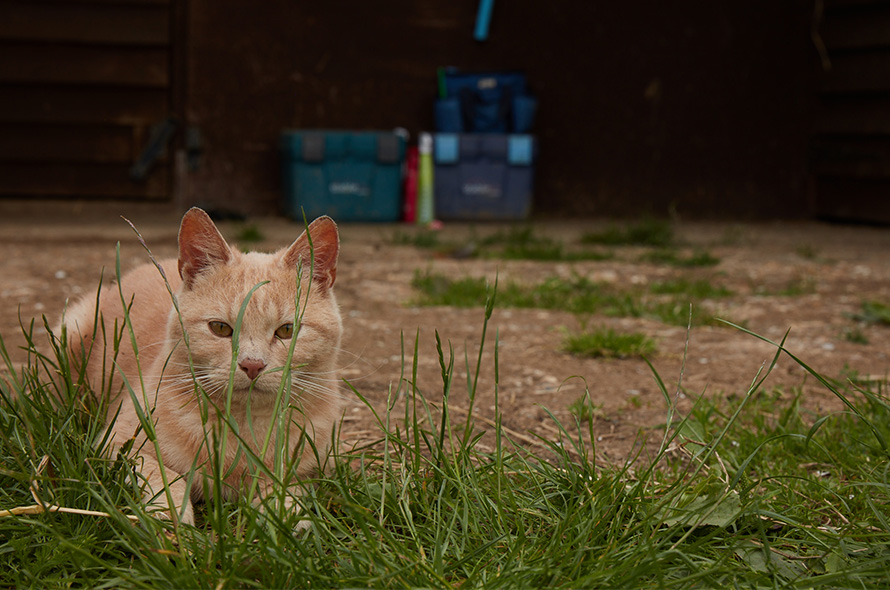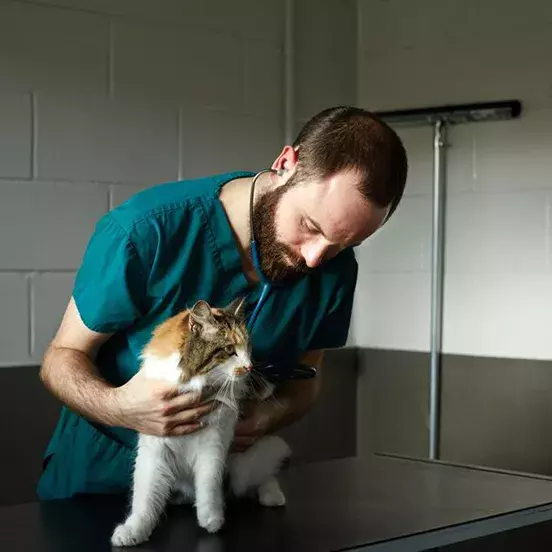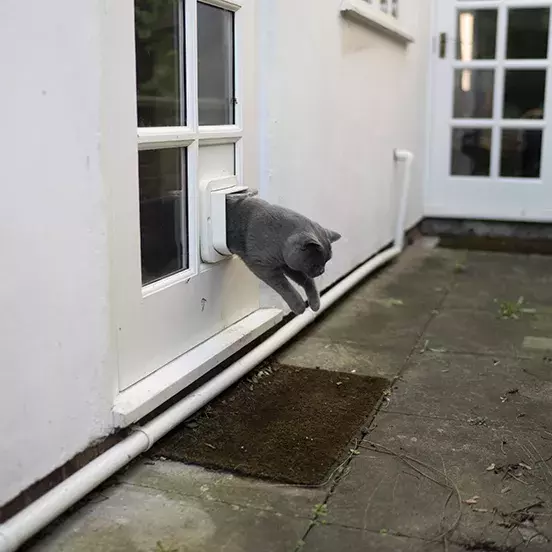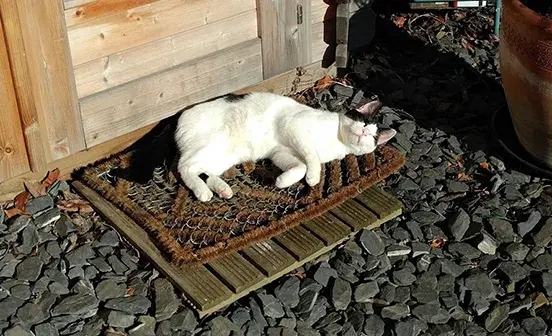If your cat is stung by a bee or wasp they are most likely to suffer from a swollen paw or face, which are the most common places for cats to be stung. Your cat will experience some localised pain and irritation from the sting, just like a human, but this should go away after a short period of time.

Some cats are allergic to the poison that is injected by a bee or wasp sting. If this is the case your cat will experience a severe reaction, and if not treated this can be fatal. Likewise, if your cat is stung several times in one go or is stung on the throat or mouth, you should contact your vet urgently for advice. If this happens, your vet will probably ask you to bring your cat straight in for treatment.
Signs that your cat has been stung by a bee or wasp
- Nibbling at or suddenly giving attention to the place they have been stung
- Yowling or vocalising more than usual
- Swelling in the specific area (this may be harder to detect with long-haired cats)
- Pawing at the place they’ve been stung e.g. their face, mouth or throat
Cats are very good at hiding when they are in pain, so some signs of having been stung by a bee or wasp may be very subtle if displayed at all. It’s important to keep an eye out for signs of an allergic reaction as these may be more obvious and come on very suddenly. An allergic reaction requires emergency treatment.
Signs of an allergic reaction when your cat is stung by a bee or wasp
- Weakness or collapsing
- Vomiting
- Rapid breathing or difficulty breathing
- Excessive swelling around the sting and spreading away from it (this may be harder to detect with long-haired cats)
- Pale gums
- Diarrhoea
If your cat is displaying any of these signs, contact your vet straight away and arrange to take your cat in for emergency treatment.
What to do if your cat has been stung
Quickly and calmly remove the sting using a credit card, or something like it, to scrape it out, taking care to scrape from below the venom sac. Don’t squeeze or pull the sting out as this may cause more venom to be released and prolong the irritation.
Next, take a clean tea towel or cloth and run it under cold water. Wrap or hold it against the area your cat has been stung in order to reduce the swelling. Applying ice is a good way to quickly soothe the site of the sting but be careful not to shock your cat with the sudden temperature change and sensation.
Keep an eye out for signs of an allergic reaction. These will most likely show within the first hour but potentially within the first few hours.
Over the counter antihistamines are sometimes recommended when your cat has been stung, but certain ingredients in different brands can be fatal to animals. If you choose to do this you should always check with your vet to make sure you are giving the right drug, and in the right quantity for your cat’s size and weight.



